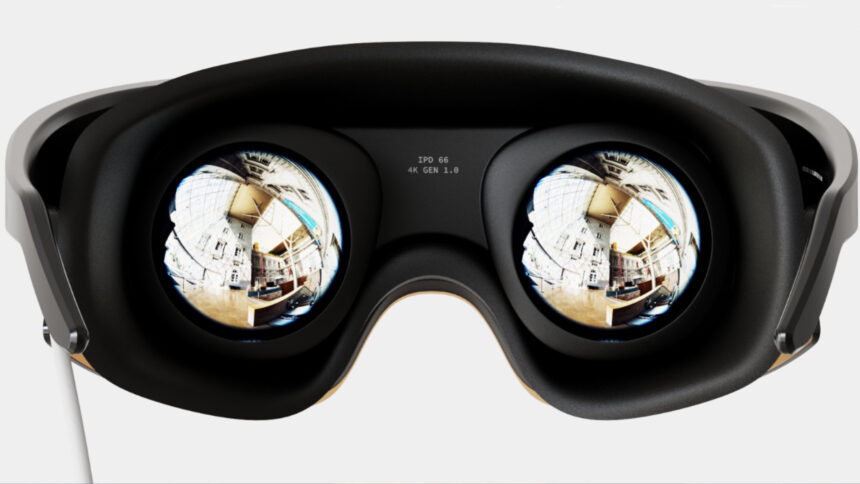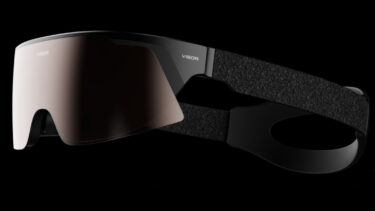Immersed founder Renji Bijoy recently leaked more details about the company’s Visor headset, most notably mentioning a previously unknown wireless mode.
Immersed is best known as a virtual desktop app developer, but in August the company announced it was entering the hardware market soon with an XR headset designed specifically for work.
Some of the images show a cable coming from the headset, suggesting a tethered device. Immersed connects to Windows PCs and Macs, so it’s safe to assume a cable connection is supported.
We didn’t know until now that the Visor would also support wireless connectivity.
Visor battery and wireless
Since Renji let it slip in Q2C VR GAMER’s live YouTube interview video that the Visor will have a wireless mode, he decided to share more details about how that feature works.
The Immersed Visor will ship with a two-hour battery on a tether. The battery itself contains Wi-Fi and Bluetooth so you can step away from the computer, work from the couch, or travel around the room without losing your connection.
The battery life is expected to be two hours, but since Immersed is a virtual desktop app, you’ll be at your computer or laptop most of the time. In that case, the other end of the battery plugs into your computer to keep the battery charged, power the headset, and supply video for the displays.
Just like Apple’s Vision Pro, the weight of the battery isn’t on your face, it’s in your pocket or on your desk. Unlike the Apple Vision Pro, the Immersed Visor will weigh about five ounces instead of the one-pound heft of almost every other VR headset.
The battery contains the hardware for Wi-Fi and Bluetooth. That’s part of how Immersed will keep weight so low. Larger tethered batteries will become available later.
More Visor details
While discussing the wired mode, Renji estimated latency to be less than 10ms, even when displaying five virtual 4K screens when connected to a Thunderbolt 3 USB-C port. The Visor won’t include audio. Renji explained most Immersed users prefer to use their earbuds with their laptop of computer.
The OLED displays are 4K per eye and will have a density of 43 pixels per degree (PPD) at the center. The Visor also has a 2.5K model that provides 32 PPD.

The Visor also includes hand and eye-tracking, yet it’s remarkably thin, due to a focus on making a true productivity headset. Out of the box it will run the Immersed app to connect to your computer or laptop, providing a 6DoF virtual display system that supports all of your Windows or Mac apps.
Renji shared that about 90% of Immersed headset orders are for the Visor 4K version. It only costs $250 more at $750, so that isn’t a big surprise to VR fans. About 10% of orders are for the $500 Visor 2.5K model.
Passthrough is critical for a work-centric headset and Immersed is giving the Visor a passthrough quality that’s good enough to see your phone clearly without removing the headset. Renji said it will be about four times higher resolution than anything currently on the market.
The Visor includes two color passthrough cameras, two grayscale cameras, and a depth sensor. Immersed hides those cameras behind a removable tinted shade, so you don’t look like a cyborg if you wear the Visor at a coffee shop. The shade is gray for the Visor 4K and 2.5K. For the Founder’s Edition Visor 4K, the shade is orange to match the Immersed app’s theme.
The Visor will include a removable light blocker and that’s part of the reason for the face scan, along with collecting an accurate measurement of your IPD. Renji clarified that there are a few different light blockers and Immersed is not custom molding or cutting light blockers for a perfect fit, like Bigscreen does for its Beyond headset.
You can preorder the Immersed Visor VR headset here.
The video below is cued up to the Immersed Visor discussion, but the entire interview is good. Renji discusses what he did before launching Immersed and the early beginnings of the company.
Source: Mixed News




